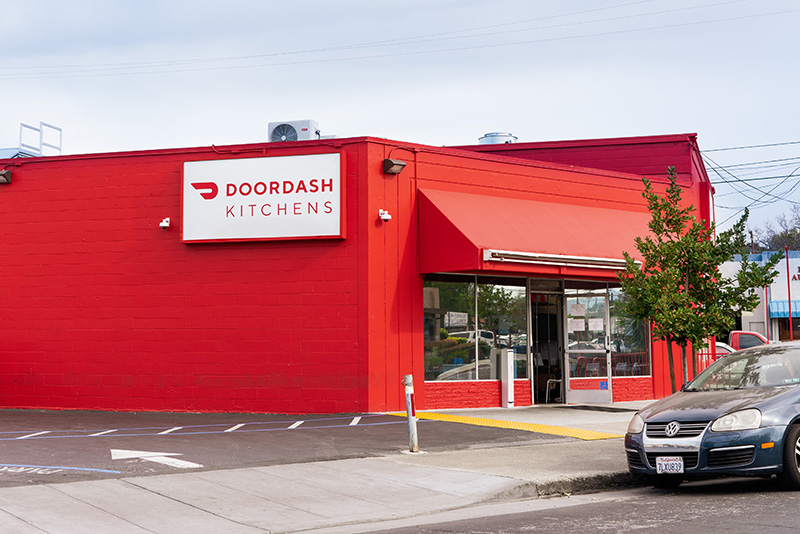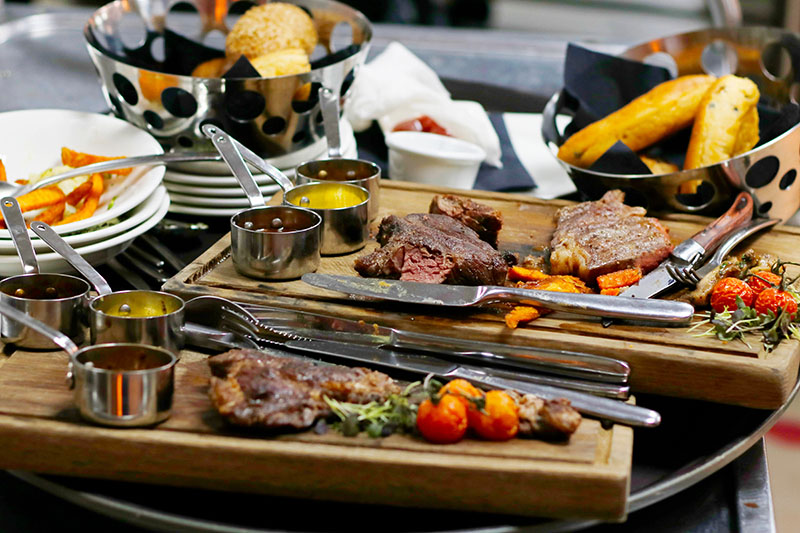
How Ghost Kitchens Will Change the Restaurant World
A “ghost kitchen” isn’t run by the supernatural. So, what is a ghost kitchen? And why are more restaurants transitioning to this concept?
It’s an innovative dining experience that is part of a new wave of running businesses with limited staff and more technology.
Exploring Ghost Kitchens: A New Era in Dining
Companies that run ghost restaurants do not have any sit-down or front-of-house operations. Instead, they’re optimized for pick-up or delivery options. This means outsourced services such as Uber Eats and DoorDash are among the main ways you can get your meal from these ghost restaurants. The concept mainly reduces traditional startup and operational costs and allows for greater flexibility with the menu or branding. It also means that the ghost kitchen concept can be done in smaller premises and anywhere available to rent.

Technology Boost: How Ghost Kitchens Work Smarter, Not Harder
The ghost kitchen concept works by allowing companies to work smarter while not needing to spend extra on more staff, such as waiters or even cutlery.
According to this Yelp article, the need for a massive real estate footprint is one of the main reasons why ghost kitchens are becoming popular. Consumers are now ordering food to their homes instead of spending time going out to restaurants and dealing with stressful crowds. By essentially removing this portion of the overhead costs, restaurants can allocate funds to other areas of need instead of struggling to meet the rising costs of running a walk-in restaurant. For example, a recent study found that 40% of takeout diners would visit a restaurant if the prices were lower, and ghost kitchens can help restaurants achieve this.
Most consumers don’t particularly care who cooks the food, as not every meal needs to be made by Gordon Ramsay. Bottom line? If the customer enjoys the food, then that’s why these kitchens are able to stay open and be successful.
Another reason why the ghost dining or ghost kitchen concept works is that it can be a simple-to-run operation. As the kitchen does not need to worry about waiting tables and serving food, the staff can concentrate on improving and delivering quality food. Plus, almost all ghost kitchen businesses are faceless, as the only people usually seen are the delivery drivers (typically third-party delivery drivers who work for Uber Eats, DoorDash or any other food delivery companies).
Convenience at Your Doorstep: The Impact on Consumer Habits
Consumer habits have changed as delivery services became more popular during the COVID-19 pandemic. Many people now prefer to have their meals delivered to their homes due to the convenience. This shift is one of the biggest reasons for the rise of ghost dining. According to a study done by Deloitte, the trend of having food delivered has stuck since 2021.
Generally, the rise of takeout in the restaurant industry has grown in the last 10 years and is projected to expand even further as restaurants understand the changes in consumer preferences. Dedicated space for pick-up and takeout options are more readily seen in restaurants, which allows consumers to quickly collect their meals. That same study found that 52% of diners would prefer ordering takeout from a ghost kitchen, as they can return to the comfort of their own home to enjoy their favorite meal alongside a show or movie.

Facing Challenges and Embracing Opportunities
Like all new and non-traditional ideas, there will always be issues or challenges when implementing them. This is the same for ghost restaurants. Many people may not like the idea of not having a sit-down option, as their preference would be to dine elsewhere for the ambiance, a change of scenery or have an opportunity to be with friends and family. Instead, food has to be delivered, which means less opportunity to be social and food may be cold by the time it arrives. Additionally, the presentation of the meal may appear messy or unappetizing because of the transportation method.
A major concern plaguing the ghost dining scene is delivery drivers. According to an article from Tomorrow City, many residents who live near ghost kitchens complain about the traffic and noise from delivery drivers. A study found that 40% of consumers prefer to order
directly from the restaurant website, while only 13% prefer third-party delivery drivers.
Another challenge is the restaurant’s reduced visibility. Because of the nature of a ghost restaurant, there will be a significant portion of consumers who will not discover the restaurant due to the lack of a physical location when running around town. While there are certainly challenges associated with this concept, restaurant owners have an opportunity to embrace the trends in the industry and stay ahead of the competition.
A Success Story
If you are wondering if ghost restaurants or kitchens can work in the real world, here is an example of a successful ghost kitchen brand operating in multiple cities.
Kitchen United has many kitchen locations that provide space for different brands to operate and make their food. This all-in-one ghost kitchen concept is perfect for delivery services as the person no longer needs to head to various locations for meals; instead, it is all in one place. This is also supportive for many small businesses that can not afford restaurant space or need a remote kitchen to help with meals.

Future Outlook: What to Expect from Ghost Kitchens
The future of the ghost kitchen concept seems to be pointing toward the expansion and full implementation of ghost restaurants with fully functioning ghost kitchens. Even though the idea of ghost kitchens is nothing new, with airlines, hotels, and even hospitals using a form of ghost kitchens, the rest of the restaurant world understands why staying on top of technology in a rapidly changing industry is essential.
According to a report done by Restaurant.org, smartphones and the increasing use of AI make it incredibly easy to get food right to your doorstep. Using smartphones is convenient and faster than phoning in or dealing with long waits. Pay methods have even become more diverse, offering multiple options for payment.
The report also states that ghost restaurants will grow as food preparation robots and drone delivery systems will help sustain ghost kitchens as they expand. All of this is possible due to the fact that the newer generation of society generally supports the integration of easy-to-use technology, and the idea of using it for food preparation is an exciting prospect. Why get off the couch when you don’t have to, right?
Conclusion: The Big Change in Dining
The rise of ghost kitchens is a clear indication of how the dining world is evolving with technology. Besides being able to order the classic takeaway, like a pizza from your local pizzeria, a ghost restaurant allows more classic restaurant meals to become takeout options. Restaurants should recognize how technological innovations will impact the way they conduct business.
Even though the convenience of a ghost kitchen is hard to beat, there’s still something cozy and familiar about a sit-down restaurant. Only time will tell how restaurant owners adapt to these rapid shifts in the dining experience.

 blog
blog



